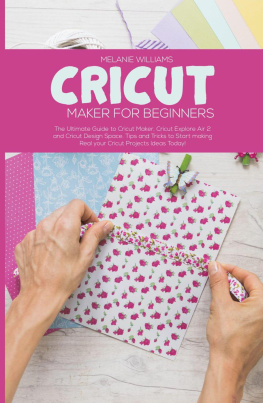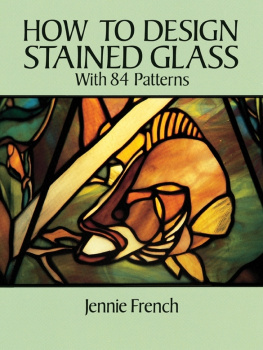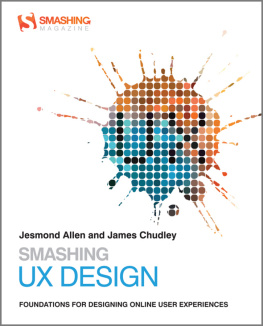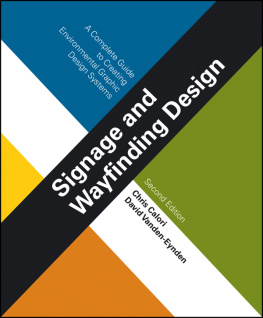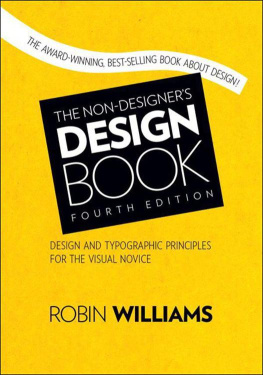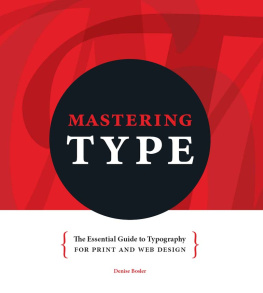Contents
Introduction
How do graphic designers think about their work? Where do their ideas come from? What kind of tricks and tools do they use, what typefaces do they choose and what are the reasons for those choices? There are many books about design, but few written by designers, for designers, exploring their process, and breaking the work down step by step. Fewer still put typography front and center of this decision making and practice.
We believe that typography is the foundation of any good design. If the typography is poor, no matter how strong the other elements, the design fails. And were not just talking about typos. Too many potentially strong designs are spoiled by careless typography that looks like it was added as an afterthought, with little respect for the words, the people who wrote them, or the rich history of the letters themselves.
For these reasons, we set out to write a book about design thinking with typography at its core. We address a wide range of typical graphic design jobs, some glamorous, others pedestrian because when youre a jobbing designer, you dont get to choose.
To introduce ourselves: Nigel is a freelance designer and photographer based in the UK. Hes recorded many design-related courses for the popular online training library Lynda.com, now LinkedIn Learning. Hugh is an award-winning illustrator and Creative Director for the Electronic Frontier Foundation, a San Franciscobased non-profit devoted to defending civil liberties in the digital world.
Whats Inside this Book
In The Type Project Book, we walk you through graphic design projects that we found particularly useful the kind of projects that are challenging and fun. We explore everything from poster design to magazine layouts, from animated web banners to hand-drawn type. With each project, we share our thinking process, the ideas that inspired us, and break down key phases, while leaving you enough room to experiment and make the project your own.
Some of these projects we have dusted off from our portfolios, others were created specifically for this book. We explore a range of techniques, some of them known to any seasoned designer, some of them our own special concoctions. The projects give a comprehensive account of whats possible using typography in Adobe InDesign, Illustrator, and Photoshop. But at the same time, the projects are personal, and somewhat idiosyncratic. We feel it couldnt be otherwise our muses would not allow it!
Our intended audience
We have imagined our reader to be a colleague or advanced student, someone comfortable with the software basics, familiar with design fundamentals perhaps someone looking for inspiration, techniques, and workarounds to sharpen their practice. While this isnt intended as a beginner book, we think that an enterprising novice will enjoy it, with some supplementary materials online or in print that explain the basics of the applications were using.
We do this stuff every day and have been doing it for years. Decades in fact. But were acutely aware that theres always more to learn. Were not infallible; we have our blind spots and bad habits. Sometimes weve become aware while writing the descriptions that there are other ways (arent there always?) of achieving the same or similar results, and in some cases those ways may have been preferable. But these are the techniques that got us through. At the end of the day, the work got done.
We hope that when you, dear reader, realize that we, the experts, are also just muddling through, it will help to demystify the learning of design techniques and software skills. Design thinking is subjective, and sometimes the best results come from doing things the wrong way, as our exploration of historical design styles will show. There are no officially sanctioned methods, and even if there were, as anarchists by temperament, we would reject them. And wed suggest you do the same.
Typefaces will carry stories best when they have stories of their own.
Tobias Frere-Jones
That said, we know that design conventions and traditions exist for a reason, and we respect them. We have studied and continue to study our craft. We hope that with experience comes wisdom, that through practice our muscle memory is deep, and that our methodology prevents us from repeating the same mistakes. But on some level, we know what works, only because weve tried so many things that dont.
If youre looking for ideas for self-initiated projects to elevate your design skills, we think this book will help you. The projects will give you suggestions for how to tackle similar design problems. Our solution is just one from an infinite range of possibilities. We hope that, rather than follow along to the letter, youll pick the bits that interest you. Create your own projects inspired by ours, take our techniques, adapt them, and mix them with your own for a unique solution.
Some technical notes
The careful reader will notice that our pronoun shifts throughout. Most often we use we, both because it felt friendlier and because we collaborated on several of these projects. Some sections were authored by only one of us and were personal projects; these seemed to work better in the first person. Well always try to clue you in on which author is talking.
For each project youll find links to a Pinterest page with inspirational examples. These extend the range of what we can show in a single book, and they also, in many cases, served as our inspiration for the projects. We hope youll explore these and dig deeper into the material. Weve also used callout boxes for the typeface that has the lead role in each project.
We are Mac users, but neither of us is a devotee of the Cult of Steve, and we like to think that such affiliations dont matter. A Windows user will have no trouble. Towards that end, our convention for listing keyboard shortcuts is Mac then Windows. For example: Create a Clipping mask (Cmd+Option+G/Ctrl+Alt+G).
Above all else, this book is a dialogue between ourselves and with you about good design, type, and combining both. We want to hear what you think, so dont be shy about contacting us.
Victorian
Embrace decorative excess
The Brief
Create a Victorian advertising card using a range of embellishments
Trim Size
US/Letter/A4
Learning Points
Adding shading and offset strokes
Adding and combining ornaments
Using stylistic alternates
Tools
Illustrator, Photoshop
Fonts Used
P22 Victorian Swash, P22 Victorian Gothic, Balford
Inspiration
pin.it/1rD6Z8v
In our era of minimalist design, a common piece of typographic advice is keep it simple. Were often told in design school to limit ourselves to two or three typefaces at most, and to leave plenty of white space. Let it breathe. Victorian printers would beg to differ.
Lets start with a definition. Literally, the Victorian era is defined by the reign of Queen Victoria of Britain, 1837 to 1901. More broadly its come to mean a cultural period in the late 1800s, from about the 1860s to the turn of the century.
One of the characteristics of Victorian typography is its, um, lack of restraint. The advertising placards, posters, and packaging of that era were created by craftsman printers, as the category of designer had yet to be invented, and they put to use all the ornamentation and excess they could muster. In a time when mass production and advertising were relatively new concepts, advertising needed to stand out. Bigger, louder, brighter, more detailed designs were the order of the day!
Choose the type


